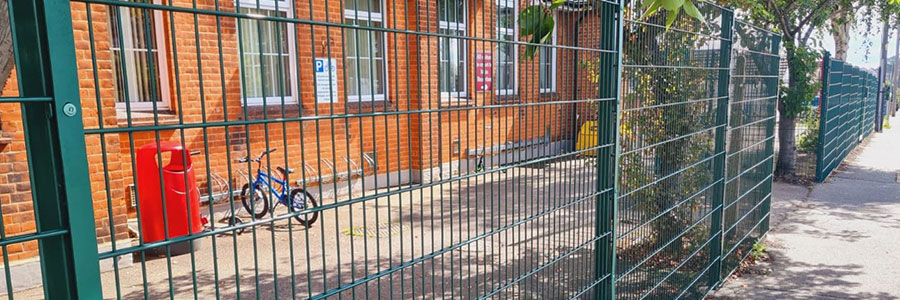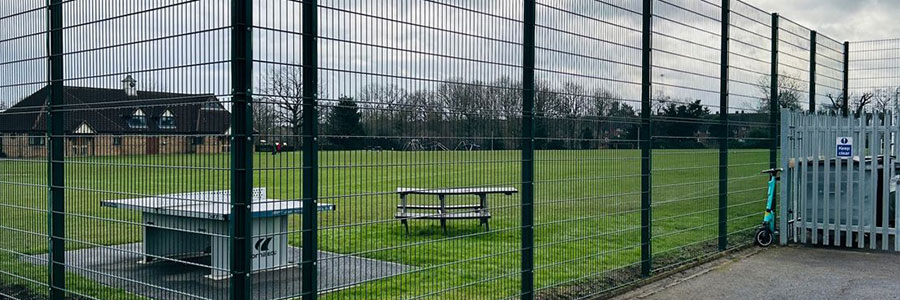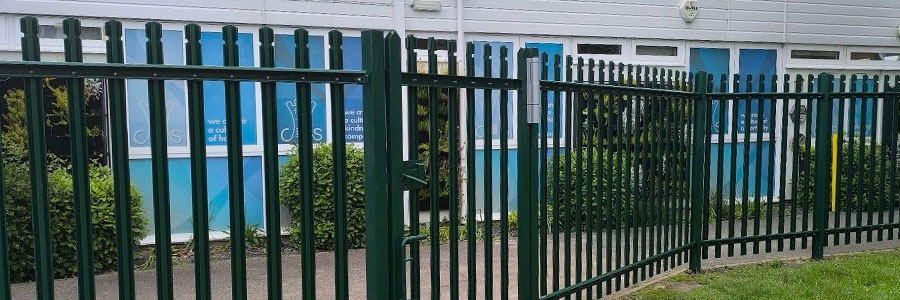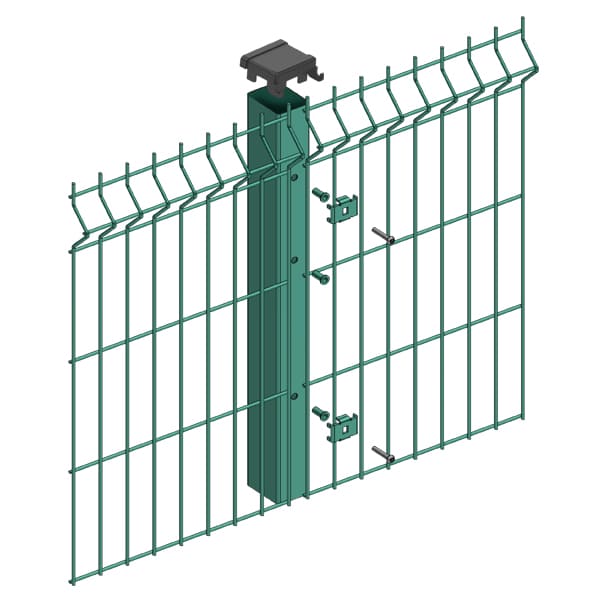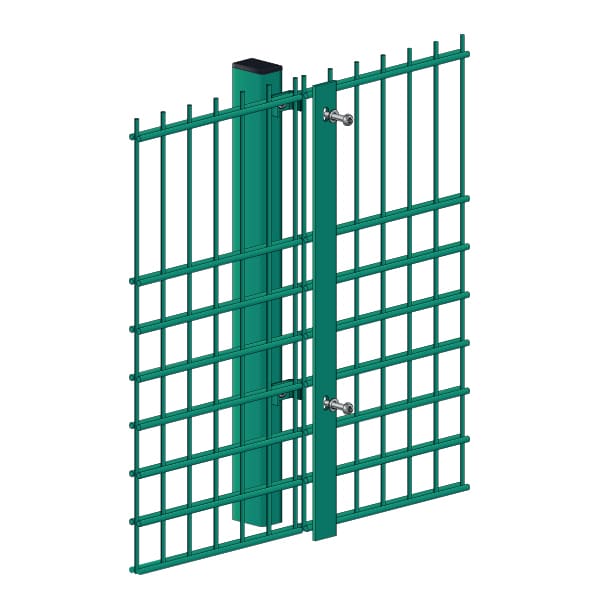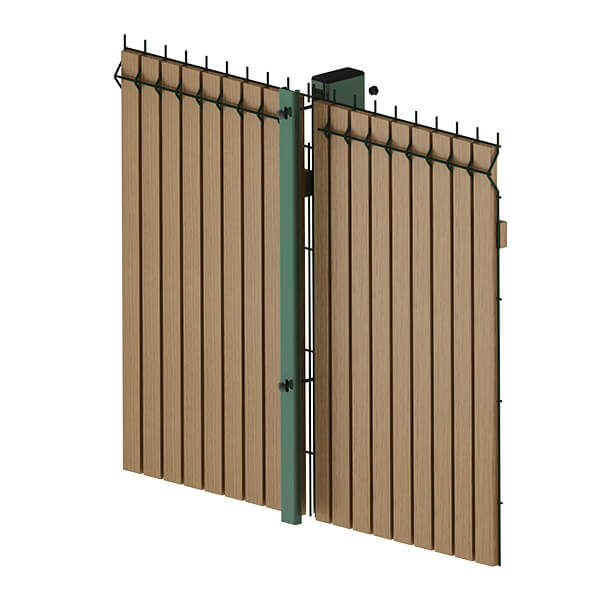Published:
Student and staff safety should be a top priority in any educational space. Part of this is ensuring the building is secured by strong, sturdy fences. However, many feel that fences make schools look like prisons and tie into the idea of a loss of freedom and entrapment.
That said, is there a choice when it comes to school fencing?
Do UK Schools Legally Require Fences?
Yes, UK schools are required to be fenced for the safety of students. According to UK law, both fences and gates must be at least two metres high. Gates should also be fitted with anti-lift hinges, while locks must use an approved locking mechanism, and should not aid in climbing over the gate.
Beyond the minimums set by the law, the decision to install a specific type of fencing is typically based on factors such as the school’s location, security concerns, and individual risk assessments conducted by the school administration. Local regulations and planning permissions may also impact fence choices.
Beyond the Law – The Benefits of School Fences
School fences help maintain a safe environment for students, staff, and visitors, but they also:
1. Help Define Boundaries
Fences help mark the school property’s perimeter, preventing misunderstandings regarding property lines and encroachments. This boundary definition also aids in creating safe zones within the school premises, ensuring students remain within designated areas during school hours.
2. Control Crowds and Manage Traffic
School fences assist in crowd control and traffic management when the bell rings. Guiding pedestrians and vehicles along designated routes minimises congestion and potential hazards, especially during busy school drop-off and pick-up times.
3. Improve Reputation
An attractive fence can contribute significantly to a school’s overall image. It serves as a symbol of safety and portrays the institution as a welcoming and secure student environment. Schools aspire to instil confidence in parents regarding the safety of their children, and a strong, well-designed fence plays an important role in achieving this goal.
Also, contrary to common belief, school fencing doesn’t have to be uninspiring or austere. With a simple, clean design and the right colours, fences can blend seamlessly with the school’s surroundings while enhancing its aesthetic appeal.
Types of School Fences
Choosing the right type of fence for a school depends on security needs, aesthetic preferences, budget constraints, and maintenance considerations. That said, here are the fence types most often seen around the perimeter of UK schools:
Mesh Panel Fences
Mesh panel fences, constructed from welded wire mesh, are well known for their strength and security. These fences offer plenty of visibility, making them suitable for school perimeters, sports fields, or outdoor recreational areas. Mesh panel fences can be powder-coated in various colours to match the school’s branding or blend with the surrounding environment.
Traditional Metal Fences
Wrought iron or steel fences are popular in schools for their durability and strength. They provide excellent security and are highly resistant to vandalism or tampering. These fences can be customised with ornamental designs to enhance the aesthetic appeal of the school premises while maintaining a professional look.
Wooden Fences
Wooden fences offer a natural, rustic alternative that many find rather charming. They are versatile and can be customised in various styles, including being added to a Protek fencing system. Wooden fences are warm and often complement the architectural style of school buildings. However, they may require regular maintenance, such as staining or painting, to preserve their appearance and integrity.
Chain Link Fences
Chain-link fences are a practical and cost-effective option for schools that require security while maintaining clear visibility. These fences are made of interwoven metal wires and are highly durable and corrosion-resistant. They provide an unobtrusive barrier while allowing clear visibility in and out of the school grounds. They can be enhanced with privacy slats or decorative elements to customise their appearance.
What to Think About Before Installing a School Fence
Legal and Regulatory Requirements
Ensuring compliance with local building codes, zoning regulations, and safety standards is crucial. Collaborating with relevant authorities and stakeholders can help organisations adhere to legal requirements, which will help streamline the approval process for fence installation projects.
Specific Security Needs
Identifying and prioritising the security concerns of a specific school is essential for deciding what type of fence you need, and the specifications it should have. Factors such as perimeter security, access control, and surveillance requirements should be carefully evaluated to enhance school safety effectively.
Design and Aesthetic Factors
While security is the aim of the game, selecting a fence that complements the school’s architectural style and landscape is also important. Whether opting for green to blend into natural surroundings or bright, fun colours to suit a children’s playground, school fencing should take appearance into account.
Material
Metal, wood, vinyl, and composite materials are commonly chosen due to their durability, resilience, and longevity. These are important factors, as you don’t want to be repainting or repairing a school fence every year. Climate, terrain, and maintenance requirements should inform material selection so that the fence will last.
Budget and Funding
Assessing how much a fence will cost your short and long-term budget is essential for budget planning and resource allocation. Schools should evaluate the initial costs of materials, labour, and installation against the long-term benefits of enhanced security and property protection. Exploring funding opportunities, grants, or community partnerships can help offset expenses and make fence installation more economically feasible!
Community Engagement
Engaging with the school community, including parents, students, faculty, and neighbours, can be really useful for garnering support and addressing concerns. Transparent communication, stakeholder input, and public forums can foster collaboration and consensus-building throughout planning and implementation.
Do You Need School Fencing?
School fences safeguard educational environments and promote student and faculty safety. At Alexandra Security, our range of fencing and gates is ideally designed for use in public schools, nurseries, playgrounds and sports fields. To find out more, contact us or call 01892 833 001 today.





